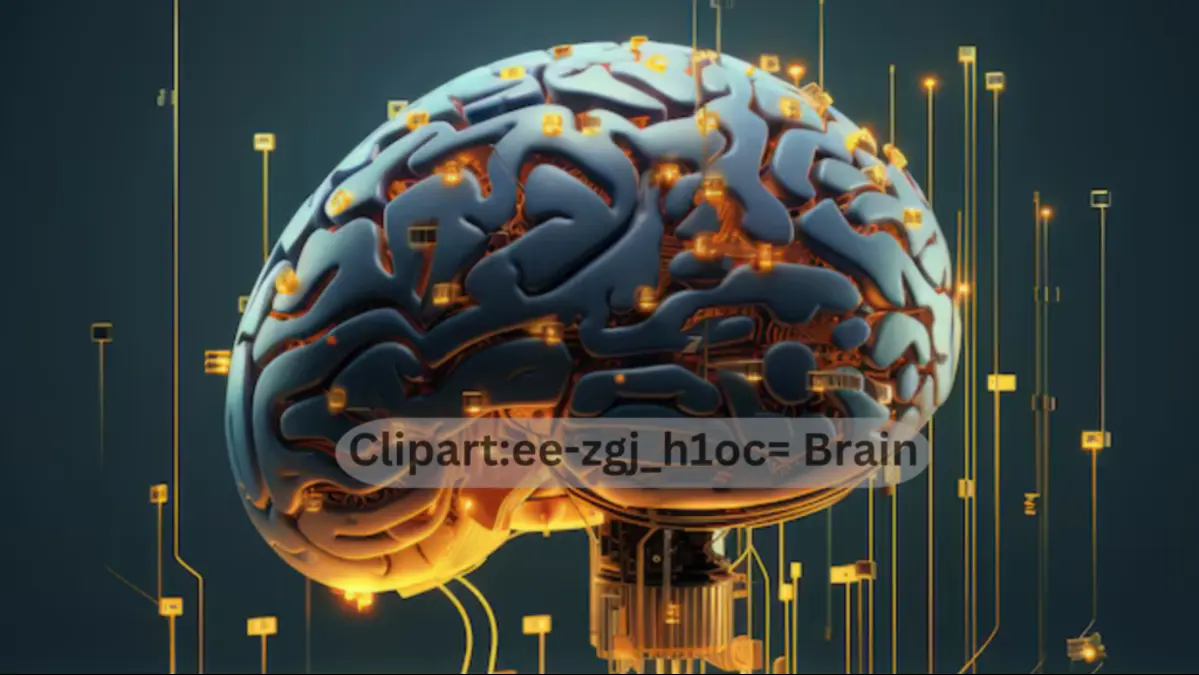Exploring the World of clipart:ee-zgj_h1oc= brain A Visual Journey
Introduction to clipart:ee-zgj_h1oc= brain
In today’s digital landscape, clipart:ee-zgj_h1oc= brain serves as an essential tool for communication, design, and education. Among the myriad of themes available, brain clipart stands out, symbolizing knowledge, creativity, and intelligence. Whether you’re a teacher looking to spice up your classroom materials, a designer seeking unique visuals for a project, or a content creator aiming to illustrate complex concepts, brain clipart can be a game-changer.
In this article, we will delve into the various aspects of clipart:ee-zgj_h1oc= brain, from its significance and applications to tips on how to effectively incorporate it into your work. We’ll explore its artistic styles, educational uses, and the emotional responses it can evoke, providing you with a comprehensive understanding of this fascinating topic.
The Significance of Brain Imagery in Modern Design
Symbolism of the Brain
The brain is often regarded as the epicenter of human thought and creativity. It symbolizes intellect, innovation, and the complexities of human emotions. In design, using brain imagery can convey deep meanings and provoke thought. When people see a brain, they instantly associate it with intelligence, learning, and problem-solving. This association makes clipart:ee-zgj_h1oc= brain a powerful tool for educators, marketers, and content creators alike.
Cultural Relevance

Across various cultures, the brain holds significant symbolic value. In Western societies, it often represents rational thought and scientific inquiry. In contrast, Eastern philosophies may highlight the brain’s connection to spiritual enlightenment and holistic understanding. By utilizing clipart:ee-zgj_h1oc= brain, designers can tap into these rich cultural narratives, making their work resonate with a wider audience.
The Rise of Visual Communication
In our fast-paced, image-driven world, visual communication has become crucial. clipart:ee-zgj_h1oc= brain serves as an effective means to break down complex ideas into easily digestible visuals. Infographics, presentations, and social media posts benefit from the inclusion of brain imagery, making information more engaging and memorable.
Applications of clipart:ee-zgj_h1oc= brain in Various Fields
Education
One of the primary sectors benefiting from clipart:ee-zgj_h1oc= brain is education. Teachers often seek creative ways to explain difficult concepts, and visuals can make learning more accessible. Brain clipart can be used in:
Lesson Plans: Incorporating brain imagery into lesson plans can help highlight the importance of cognitive skills. For instance, a clipart:ee-zgj_h1oc= brain image of a brain can serve as a focal point when discussing critical thinking or problem-solving strategies.
Visual Aids: Students often respond better to visual aids than to text-heavy materials. By using clipart:ee-zgj_h1oc= brain in presentations or worksheets, educators can illustrate complex topics like neuroscience, psychology, or cognitive development in a more relatable way.
Interactive Learning: Games and quizzes that incorporate brain imagery can enhance student engagement. For example, using clipart:ee-zgj_h1oc= brain in a trivia game about human anatomy can make learning fun and memorable.
Marketing and Branding
In the realm of marketing, visuals play a crucial role in capturing attention and conveying messages. Brain clipart can be effectively utilized in:
Content Marketing: Eye-catching brain imagery can enhance the aesthetic appeal of blogs and articles discussing topics related to mental health, neuroscience, or personal development.
Social Media Campaigns: In a landscape saturated with content, having unique visuals can set your posts apart. clipart:ee-zgj_h1oc= brain can help create memorable graphics that resonate with your audience, particularly when discussing topics like innovation or education.
Brand Identity: For businesses focusing on cognitive development, education, or technology, incorporating brain imagery into branding can establish a strong identity. It signals to consumers that the brand values intelligence, creativity, and growth.
Health and Wellness
The health and wellness sector also sees significant applications for brain clipart. This can range from promoting mental health awareness to educating the public about neurological conditions. Some key uses include:
Awareness Campaigns: Nonprofits and organizations often run campaigns aimed at raising awareness about mental health issues. Brain clipart can be a powerful visual tool in such campaigns, helping to destigmatize conversations around mental health.
Educational Materials: Health professionals can use brain imagery in brochures, websites, and informational videos to educate the public about brain health and wellness. This can include information about neurological disorders, healthy habits, and cognitive training exercises.
Therapeutic Tools: In therapeutic settings, visuals can aid in communication. Therapists can use brain clipart to help clients understand their thought processes or to discuss emotional challenges in a non-threatening way.
Artistic Styles of clipart:ee-zgj_h1oc= brain
Realistic vs. Abstract
When selecting a clipart:ee-zgj_h1oc= brain, one of the first decisions is choosing between realistic and abstract representations. Each style serves different purposes and can evoke various emotions.
Realistic clipart:ee-zgj_h1oc= brain: This style closely resembles anatomical drawings or images of the human brain. It is beneficial in educational contexts, where accuracy is crucial. Realistic brain clipart can help students learn about different brain regions, their functions, and their roles in behavior.
Abstract clipart:ee-zgj_h1oc= brain: On the other hand, abstract representations of the brain can symbolize concepts like creativity, innovation, and thinking outside the box. These designs often employ vibrant colors and shapes, making them suitable for marketing and branding purposes, where emotional impact is more important than anatomical accuracy.
Color Schemes and Their Impact
Colors play a significant role in visual perception, and clipart:ee-zgj_h1oc= brain is no exception. Different color schemes can evoke various feelings and associations.
Cool Colors: Blues and greens are often associated with calmness, intellect, and tranquility. Using cool colors in clipart:ee-zgj_h1oc= brain can be effective in educational settings, creating a sense of focus and clarity.
Warm Colors: Reds, oranges, and yellows can evoke feelings of energy, passion, and creativity. These colors are great for marketing materials aimed at inspiring action or innovation.
Monochrome vs. Multi-Colored: Monochrome designs can convey sophistication and professionalism, while multi-colored clipart:ee-zgj_h1oc= brain tends to be more playful and engaging. The choice between these styles depends on the context and audience.
Customization and Personalization
Incorporating customized clipart:ee-zgj_h1oc= brain can add a unique touch to your projects. Many designers offer personalized services to create clipart that aligns with specific branding or thematic elements. Custom clipart:ee-zgj_h1oc= brain can feature:
Brand Colors: Integrating your brand’s color palette into brain imagery can help maintain visual consistency across all materials.
Specific Elements: Adding elements relevant to your work—like gears for innovation or light bulbs for ideas—can create a more tailored representation of the brain that speaks to your audience’s interests.
Typography: Combining clipart:ee-zgj_h1oc= brain with relevant text or quotes can create compelling visuals that enhance your messaging.
Tips for Effectively Using clipart:ee-zgj_h1oc= brain
Choosing the Right clipart:ee-zgj_h1oc= brain
Selecting the appropriate clipart:ee-zgj_h1oc= brain involves considering your audience and the message you want to convey. Here are some tips:
Relevance: Ensure the clipart:ee-zgj_h1oc= brain aligns with the topic at hand. For example, if discussing mental health, opt for imagery that evokes empathy and understanding.
Quality: High-quality images are crucial for maintaining professionalism. Look for a clipart:ee-zgj_h1oc= brain that is well-designed, clear, and visually appealing.
Licensing: Be mindful of copyright issues. Use clipart:ee-zgj_h1oc= brain that is either free for commercial use or properly licensed to avoid legal complications.
Integrating clipart:ee-zgj_h1oc= brain into Your Design
Once you have selected the right brain clipart:ee-zgj_h1oc= brain, the next step is to integrate it seamlessly into your design. Here are some strategies:
Balance: Ensure that the clipart:ee-zgj_h1oc= brain does not overwhelm the other elements of your design. Maintain a balanced layout where the brain imagery complements the text and other visuals.
Hierarchy: Use size and placement to establish a visual hierarchy. Make the clipart:ee-zgj_h1oc= brain a focal point or use it as a subtle background element, depending on your messaging.
Consistent Style: If you’re using multiple images, ensure they share a similar style and color palette. This creates cohesion and a professional look across your materials.
Testing and Feedback
Before finalizing your project, gather feedback from peers or target audience members. Here’s how:
Surveys: Conduct surveys to gauge how your visuals resonate with others. Ask specific questions about the clarity and impact of your clipart:ee-zgj_h1oc= brain.
A/B Testing: If applicable, consider A/B testing different designs to see which visuals perform better. This can provide valuable insights into audience preferences.
Iterate: Be open to making changes based on feedback. Design is often an iterative process, and refining your visuals can lead to a more effective final product.
Emotional Responses to clipart:ee-zgj_h1oc= brain
Evoking Curiosity and Interest
Brain imagery can pique curiosity and draw viewers in. The brain is a complex organ, and visuals depicting it can inspire questions about its functions and mysteries. This intrigue can lead to deeper engagement with the content, encouraging individuals to explore further.
Communicating Empathy and Understanding
When used in contexts related to mental health or cognitive challenges, clipart:ee-zgj_h1oc= brain can evoke feelings of empathy and compassion. By visually representing the brain, creators can foster a sense of connection and understanding, encouraging discussions around these important topics.
Inspiring Innovation and Creativity
In educational and professional settings, brain imagery can serve as a catalyst for innovation. By representing the brain’s capacity for creativity and problem-solving, clipart:ee-zgj_h1oc= brain can inspire individuals to think outside the box and approach challenges with fresh perspectives.
The Future of clipart:ee-zgj_h1oc= brain
Trends in Digital Art and Design
As technology continues to evolve, so too does the world of clipart:ee-zgj_h1oc= brain. The rise of 3D design, animation, and interactive graphics offers new opportunities for creators to explore brain imagery in dynamic ways.



